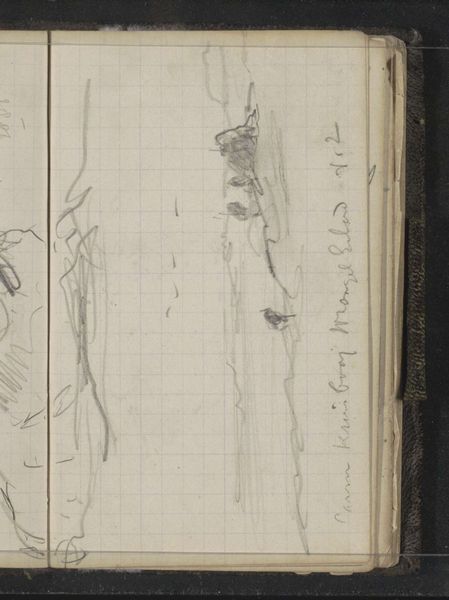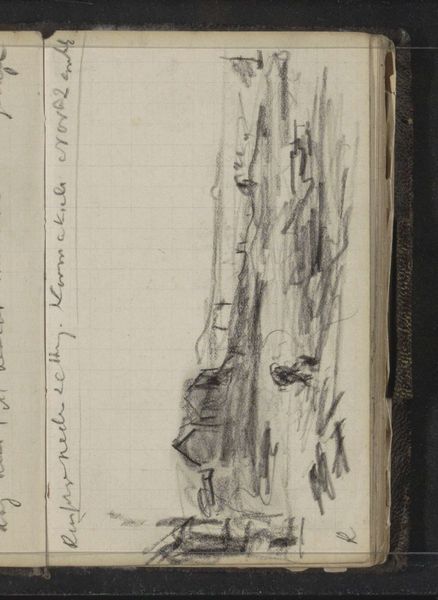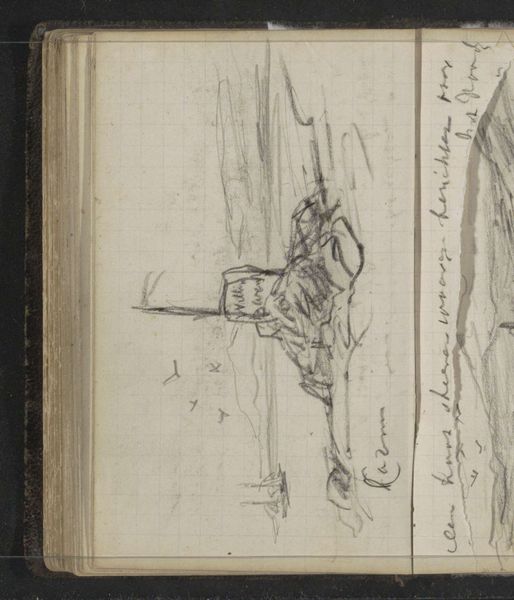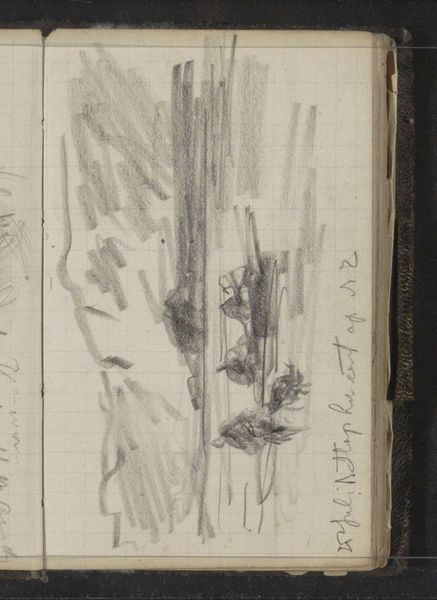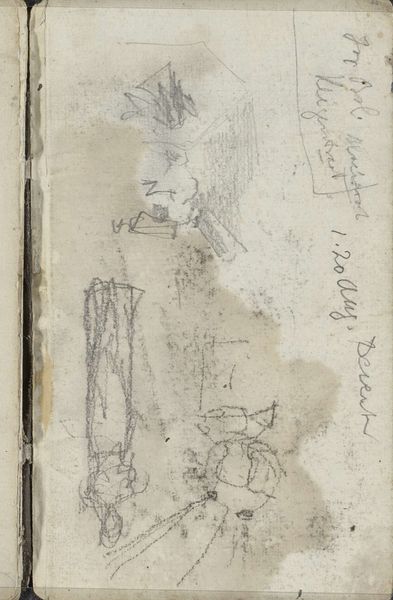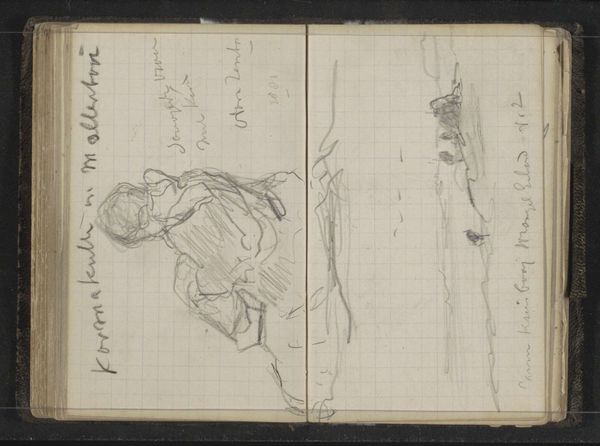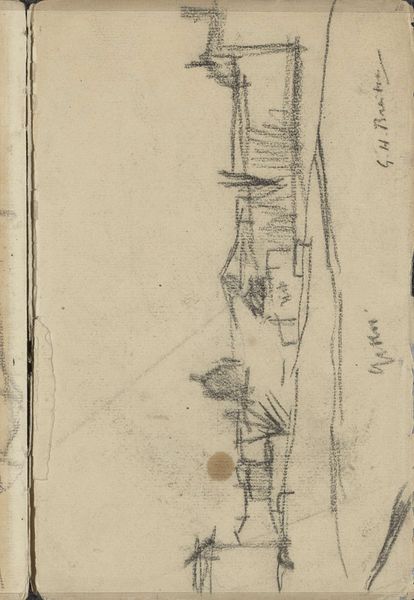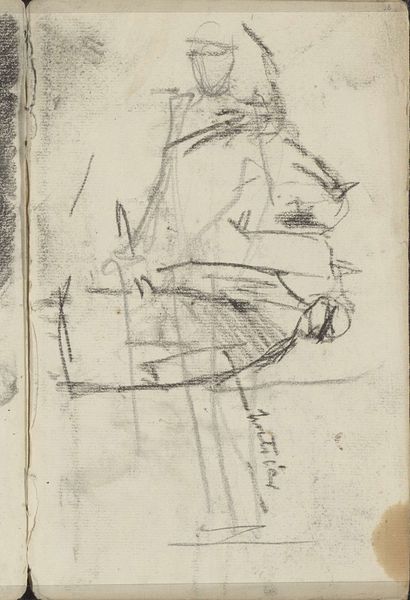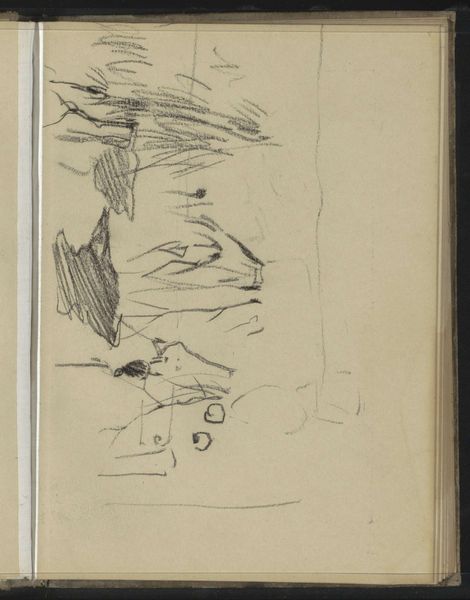
#
aged paper
#
toned paper
#
quirky sketch
#
sketch book
#
personal sketchbook
#
ink colored
#
sketchbook drawing
#
watercolour illustration
#
sketchbook art
#
watercolor
Copyright: Rijks Museum: Open Domain
Editor: Here we have "Two Samoyeds in a Rowing Boat," an ink and watercolor sketch by Louis Apol, created sometime between 1880 and 1888. The aged paper adds such a sense of history. What stands out to me is how raw and immediate it feels, like a captured moment. What do you see in it? Curator: Looking at the sketch through a materialist lens, I am most intrigued by the means of its production and the social context in which it was created. Apol used readily available materials like ink, watercolor, and paper to produce this quick sketch. What impact might mass production of sketchbooks during that era have had on art practices, like sketching *en plein air* or creating private studies? Editor: That’s interesting. I hadn’t considered the industrial aspect. It makes me think about accessibility. Would art have been more readily made by all classes? Curator: Exactly! This sketchbook drawing blurs the traditional hierarchy between 'high art' and 'craft.' It begs the question, how do the conditions of artistic production—access to materials, available time, the intended audience—shape the final outcome and its perceived value? Could you compare this to a formally commissioned artwork and how labor shapes its value? Editor: I can see that. Maybe the freedom afforded by accessible materials influenced a loosening of style? Perhaps the spontaneity here is connected to that accessibility? Curator: Precisely! And who were the Samoyeds, and what would be their perception of Apol's rendering of them. The choice of subject matter—two dogs in a rowing boat—further encourages one to look at Apol’s piece as situated within social context, consumption, and accessibility. Editor: It’s so fascinating how thinking about the materials themselves opens up new perspectives on the art! Curator: It shifts the focus from the finished product to the artistic process and social underpinnings. Food for thought!
Comments
No comments
Be the first to comment and join the conversation on the ultimate creative platform.

